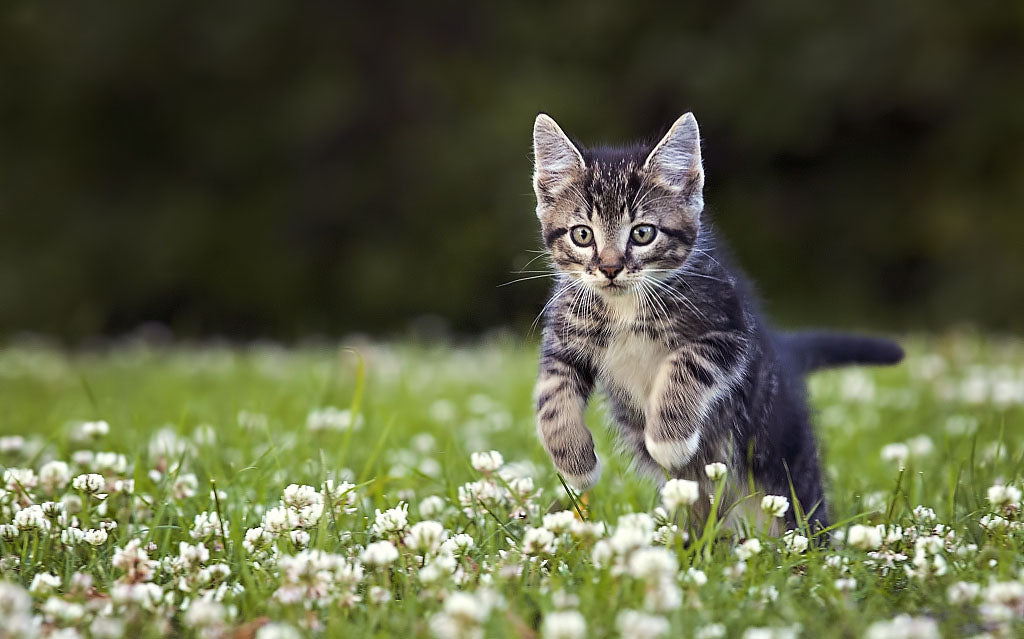- AED
- AFN
- ALL
- AMD
- ANG
- AUD
- AWG
- AZN
- BAM
- BBD
- BDT
- BGN
- BIF
- BND
- BOB
- BSD
- BWP
- BZD
- CAD
- CDF
- CHF
- CNY
- CRC
- CVE
- CZK
- DJF
- DKK
- DOP
- DZD
- EGP
- ETB
- EUR
- FJD
- FKP
- GBP
- GMD
- GNF
- GTQ
- GYD
- HKD
- HNL
- HUF
- IDR
- ILS
- INR
- ISK
- JMD
- JPY
- KES
- KGS
- KHR
- KMF
- KRW
- KYD
- KZT
- LAK
- LBP
- LKR
- MAD
- MDL
- MKD
- MMK
- MNT
- MOP
- MUR
- MVR
- MWK
- MYR
- NGN
- NIO
- NPR
- NZD
- PEN
- PGK
- PHP
- PKR
- PLN
- PYG
- QAR
- RON
- RSD
- RWF
- SAR
- SBD
- SEK
- SGD
- SHP
- SLL
- STD
- THB
- TJS
- TOP
- TTD
- TWD
- TZS
- UAH
- UGX
- USD
- UYU
- UZS
- VND
- VUV
- WST
- XAF
- XCD
- XOF
- XPF
- YER
Common Flowers That Are Poisonous to Cats

Open up any home magazine and you'll see how flowers are used to achieve a sophisticated look. Then you visit a flower shop and carefully select your preferred flowers to adorn your home. Did you ever think that your beloved flower could pose a danger to your feline friend? Cats, like humans, prefer to enjoy the smell of flora and take a bite of plants. So please be aware of the following common flowers that are toxic to cats.
Lily
Common lily plants: Aloe Vera, Tulip, Amaryllis, etc.
While lilies might look pretty, they are extremely poisonous to cats. Even a small amount of ingestion of all parts of the Lilium plant, including pollen and even water soaked in cut lilies, can lead to severe and fatal kidney failure along with vomiting, diarrhea, and seizures in cats. The pathology is unknown and the cure rate is extremely low.

Chrysanthemum
Common flowers of the Asteraceae Family: Daisy, Fleabane, Chamomile, Dahlia, etc.
Chrysanthemum plants may contain potential irritants such as pyrethrin and sesquiterpene, which can cause vomiting, diarrhea, and skin inflammation even if a cat takes a slight bite and eats directly or touches them. When shopping for mosquito repellents, it's important to check the ingredients for pyrethrin, which is commonly used. To ensure the safety of your pets, opt for pet-friendly products instead.

Daffodil
Common Daffodil flowers: Narcissus, Jonquil, Colchicum, etc.
Popular bulbous flowers all contain diterpene alkaloids, which are concentrated in the bulbs, but the flowers and leaves can also contain toxins, making the whole plant inedible. Ingestion may cause vomiting, diarrhea, salivation and other symptoms, especially do not let the cat ingest seed balls.
Colchicine is a highly toxic substance that can cause serious harm to felines. Its consumption can lead to severe gastrointestinal bleeding, vomiting, and bloody diarrhea. Additionally, it can cause damage to vital organs such as the liver and kidneys, as well as seizures, respiratory failure, and even death.

Azalea
Common Azalea flowers: Rosebay, Rhododendron, Desert Rose, etc.
Azaleas and some plants in the rhododendrons family produce the andromedotoxin toxin. All parts of these plants contain this toxin, which can cause severe symptoms such as central nervous system depression, cardiovascular failure, and death if consumed in large quantities by felines.

Poinsettia
There is a common misconception that poinsettia is highly poisonous, but only its sap is poisonous. The source of the rumor is that most Euphorbia plants are poisonous, and their English name Poinsettia is similar to the English word for Poison.
The milky white juice of poinsettia contains many substances with strong irritation to the skin and stomach. Can cause skin, mouth and stomach discomfort after contact and consumption.

Carnation
Cats may develop mild gastroenteritis or dermatitis after ingesting or touching carnations. The pathology is unknown, but the symptoms are mild and usually do not require medical treatment. However, try to keep your cat away from the carnations you receive on Mother's Day.

Hydrangea
Although a beloved flower by many, Hydrangea need to stay far away from felines. Hydrangea contains cyanide, a compound that can break down to produce cyanide and cause poisoning. Small amounts can lead to milder symptoms such as vomiting and diarrhea, while large amounts risk cyanide poisoning.

Ivy
Ivy is most commonly planted on outdoor walls or courtyards, or raised indoors in hanging baskets, Ivy is very vigorous like a gecko climbing walls, like a spider web spread. However, Ivy contains hederagenin, which can cause vomiting, abdominal pain, drooling, and other symptoms after ingestion.

Conclusion
It's common knowledge among cat owners that our furry friends enjoy munching on leaves and will nibble on any plant within their reach for no reason. As our feline friends are naturally curious, it's crucial to include pet-friendly plants in our collection of indoor plants and outdoor gardens, especially if your cats tend to venture outside. A cat perch at a sunny window is appealing to just about any cat.
No comments







0 comments